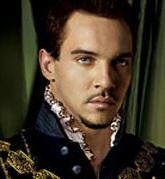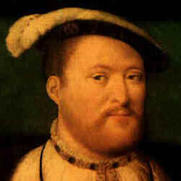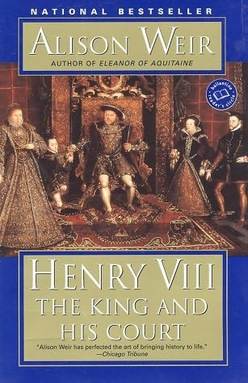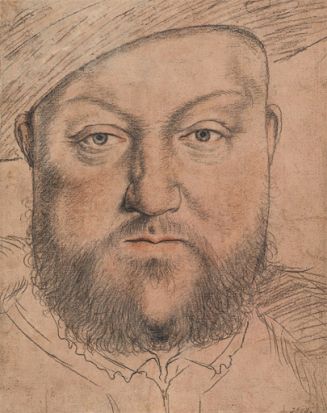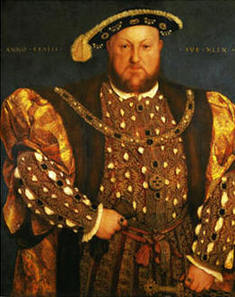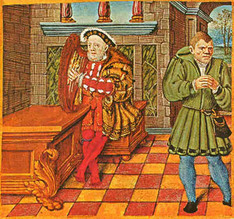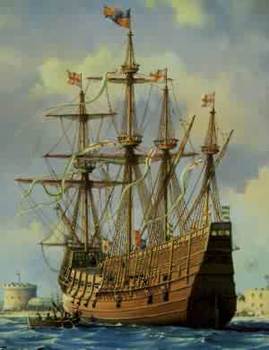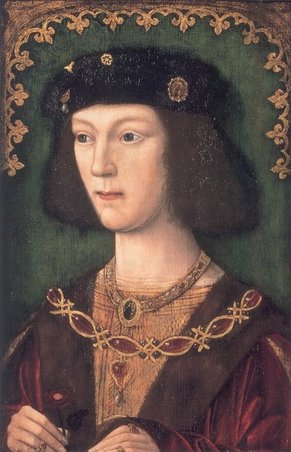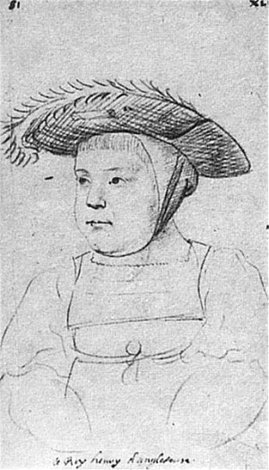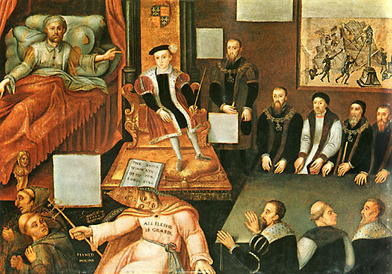King Henry VIII - Historical profile
Jump to navigation
Jump to search
For more images of the Historical Henry VIII click here Art gallery of Henry VIII
Save
| See Also: |
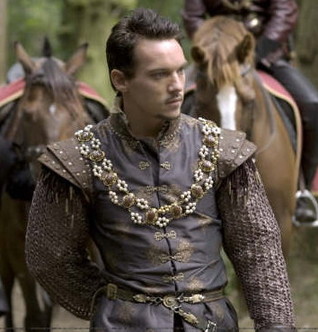 -The Venetian ambassador, Sebastian Giustiniani, described Henry in 1519 as: 'extremely handsome. Nature could not have done more for him. He is much handsomer than any other sovereign in Christendom; a great deal handsomer than the King of France; very fair and his whole frame admirably proportioned. On hearing that Francis I wore a beard, he allowed his own to grow, and as it is reddish, he has now got a beard that looks like gold.' - By 1531, Ludovico Falieri, the next Venetian ambassador in England says:"In the 8th Henry such beauty of mind and body is combined as to surprise and astonish. Grand stature, suited to his exalted position, showing the superiority of mind and character; a face like an angel's, so fair it is; his head bald like Cæsar's, and he wears a beard, which is not the English custom. He is accomplished in every manly exercise, sits his horse well, tilts with his lance, throws the quoit, shoots with his bow excellent well; he is a fine tennis player, and he practises all these gifts with the greatest industry. Such a prince could not fail to have cultivated also his character and his intellect. He has been a student from his childhood; he knows literature, philosophy, and theology; speaks and writes Spanish, French, and Italian, besides Latin and English. He is kind, gracious, courteous, liberal, especially to men of learning, whom he is always ready to help. He appears religious also, generally hears two masses a day, and on holy days High Mass besides. He is very charitable, giving away ten thousand gold ducats annually among orphans, widows, and cripples." -a French Ambassador in Rome stated that the King was "a youngling [who] cares for nothing but girls and hunting and wastes his father's patrimony" - One of his contemporaries said he was "one of the goodliest men that lived in his time, in manners more than a man, most amiable, courteous and benign in gesture unto all " -"His Majesty is the handsomest potentate I ever set eyes on; above the usual height, with an extremely fine calf to his leg, his complexion very fair and bright, auburn hair combed straight and short, in the French fashion, and a round face so very beautiful that it would become a pretty woman, his throat being rather long and thick.... He will enter his twenty-fifth year the month after next. He speaks French, English and Latin, and a little Italian, plays well on the lute and harpsichord, sings from book at sight, draws the bow with greater strength than any man in England and jousts marvelously.... a most accomplished Prince. " the Venetian diplomat Pasqualigo in a dispatch, 1515 - "His fingers were one mass of jewelled rings, and around his neck he wore a gold collar from which hung a diamond as big as a walnut. His clothes were magnificent to match, sumptuous silks, cloth of gold, satins, coloured feathers and of course jewels and precious metals sprinkled everywhere." -He would later become balding and obese. Another observer of the young Henry say: he was athletic and highly intelligent. "He speaks good French, Latin and Spanish; is very religious; heard three masses daily when he hunted... He is extremely fond of hunting, never takes that diversion without tiring eight or ten horses... He is also fond of tennis."
A Tyrant or manipulated by court factions? 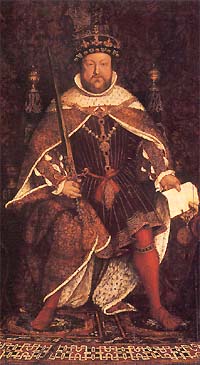 Historians are at odds on this question. A.F. Pollard whose biography came out in 1902 portrayed Henry as a ruler of blood & iron who dominated wives, ministers & political institutions. Sir Geoffrey Elton whose interpretation came out in 1955 said that Henry VIII was a weak man who needed his ministers, and especially Thomas Cromwell who was the architect of the break with Rome and of an administrative revolution in the 1530s, without which Henry would have lost his way. In 1977, Elton revised his thesis to accommodate Dr David Starkey's studies of faction and the 'inner politics' of the court and privy chamber in his final text-book, Reform and Reformation. Court faction, rather than an administrative revolution, was regarded as the main force during the reign and thus Henry was less a weak man than a King who was manipulated. "Whether Henry VIII's rule was tyrannical is a question that was raised by More's execution, and will always be debated. Diarmaid MacCulloch has recently said that Henry's vision of himself as an 'arbitrator' in the Church of England could turn into a 'murderous paranoia', as in 1539 when he burned three evangelical preachers and three papalist Catholics on the same day in order to demonstrate his 'impartiality' to the European powers. The case for and against Henry VIII can be argued from several viewpoints. He was a supreme egotist, who sometimes allowed passion and not reason to govern his actions, but he was also one of the most effective and remarkable rulers to sit on the English throne. He was feared and revered in his own lifetime. His life and legacy will continue to be re-evaluated and to exert a powerful fascination on historians and general readers alike." [source: Encarta] LINKS:
|  Interesting facts about King Henry VIII: Interesting facts about King Henry VIII:- One of Henry's jousting mottoes was ironically "Coeur Loyal" (true heart) and he had this embroidered on his clothes in the form of a heart symbol and with the word 'loyal'. He always jousted under the name "Sir Loyal Heart" when wearing Katherine of Aragon's favour. His emblem was the Tudor rose and the Beaufort portcullis signifying his tenuous link to royal blood through Margaret Beaufort. - Henry had a stable of 200 horses & was the first patron of horse racing, despite the Pope's demands for cessation of all racing in England. - He took part in wrestling, horse racing, casting the barre (throwing the hammer) and stag hunting. Gambling was also a huge part of court life, and bets were made on bear baiting, bull baiting & **** fighting. Henry had the first regular cockpit for **** fighting. He also popularized tennis, which originated in France & is the oldest ball/court game in the world. -Henry was famous for his love of music. He was a keen musician, composer and singer. It is said that he owned: 10 trombones, 14 trumpets, 5 bagpipes, 76 recorders and 78 flutes. -When he died, he had 70 residences, for which he paid around 170,000 English pounds (which is equivalent to approximately 50 million in today's economy). - He owned over 2,000 tapestries (400 inherited from his father) and 28 still remain to be seen at Hampton Court. - All of his wives were descendants of Edward I - Several significant pieces of legislation were enacted during his reign. They included the several Acts which severed the English Church from the Roman Catholic Church and established Henry as the supreme head of the Church in England, the Laws in Wales Acts 1535-1542 (which united England and Wales into one nation), the Buggery Act 1533 the first anti-****** enactment in England; Witchcraft Act 1542, which punished 'invoking or conjuring an evil spirit' with death. - He spent the equivalent of 2,400,000 English pounds each year for clothing, and in 3 years he spent 165,000 English pounds on gifts for Anne Boleyn - One year, Henry & the 800 people of his court consumed 8,200 sheep, 2,330 deer, 2,870 pigs, 1,240 oxen, 24,000 larks and 33,000 chickens. - He built a 2-story, communal public lavatory with 14 seats at Hampton Court. - Henry was obsessed with cleanliness & was very fastidious, as he was afraid to get germs and die. - He was so fat in later years, that his bed was 4 meters (12 feet) wide and he needed ropes and pulleys to help him get in an out of it. - He suffered from bleeding gums and leg ulcers, and was bad tempered and depressed in his later years. -His reported last words were : "Monks! Monks! Monks!" (this is thought to be apocryphal.) - It is said that two weeks after his burial, his coffin burst open and "all the pavement of the church was with the fat and the corrupt and putrefied bloody foully imbued". c.1540 Contemporary drawing thought to be done by an assistant of Holbein's whose name is inscribed on the back "Hanns Swarttung"
See also: King Henry VIII's contemporary portraits page Henry with his Jester, Will Somers depicted in Henry's own psalter King Henry VIII and The Tudor Navy Along with Alfred the Great, Henry is traditionally called one of the founders of the Royal Navy. There are good reasons for this - his reign featured some naval warfare and, more significantly, large royal investment in shipbuilding (including a few spectacular 'great ships' such as the Mary Rose), dockyards (such as HMNB Portsmouth) and naval innovations (eg the use of cannon on board ship - although archers were still deployed on medieval-style forecastles and bowcastles as the ship's primary armament on large ships, or co-armament where cannon were used). However, it is a misnomer since Henry did not bequeath to his immediate successors a 'navy' in the sense of a formalised organisation with structures, ranks, formalised munitioning structures etc, but only in the sense of a set of ships (albeit some spectacular ones). Elizabeth I still had to cobble together a set of privately-owned ships to fight off the Spanish Armada and in the former, formal sense the modern British navy, the Royal Navy, is largely a product of the naval side of the Napoleonic wars. Mary Rose - Flagship of Henry VIII's navy Henry named all his ships after the women in his life including Mary Boleyn and Anne Boleyn The Mary Rose, his favourite, was also thought to have been named after his younger sister, Mary Tudor. 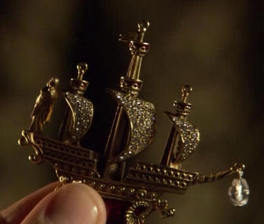 The Jewel Anne Boleyn sent to Henry depicting a woman on a ship in a storm tossed sea signifying that she was willing to brave the tempest with Henry and he was the diamond guiding the ship as her protector. 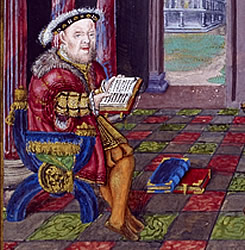 Henry's Psalter <a class="external" href="http://www.bl.uk/onlinegallery/onlineex/henryviii/musspowor/henryspsalter/index.html" rel="nofollow" target="_blank" title="[Source: British Library online]">[Source: British Library online]</a> Written and illuminated in 1540 by an emigré from the court of the French king Francis I, King Henry VIII’s Psalter is Jean Mallard’s most lavish production.It contains numerous decorated initials, as well as eight larger illuminations that allude to the text of the Psalter they illustrate. Several link Henry visually to King David and perhaps even to Christ himself. Small and easy to handle, the Psalter was used by Henry in his private devotions, as the miniature accompanying Psalm 1 shows. The King sits in his Privy Chamber contemplating the Word of God ‘day and night’, just as the Psalmist admonishes.Henry made many notes in the Psalter and these witness to his theological concerns and his identification of himself with his Old Testament counterpart. Overweight and increasingly immobile, he regretted the passing of years and read in Psalm 36: 25 that ‘I have been young and now am old’. Nor did he take much consolation in the second part of the verse, which stated that ‘I have not seen the just forsaken, nor his seed seeking bread’. |
| <embed height="282" src="http://wikifoundrytools.com/wiki/thetudorswiki/page/King+Henry+VIII+-+Historical+profile/widget/youtubevideo/-1498797990" type="application/x-shockwave-flash" width="360" wmode="transparent"/> Inventory of Henry VIII -- Tapestries & Royal Wardrobe | <embed allowfullscreen="true" height="279" src="http://wikifoundrytools.com/wiki/thetudorswiki/widget/youtubevideo/3c76c2c1db78f2c2b70b3328651d784de1cff824" type="application/x-shockwave-flash" width="385" wmode="transparent"/> Tudor historians discuss the role of art for Henry VIII and the Tudor Court. - from Historic Royal Palaces |
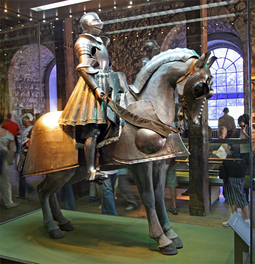 Compare Henry VIII's armour in earlier life to the one on the right in later life to see how his girth grew over the years | 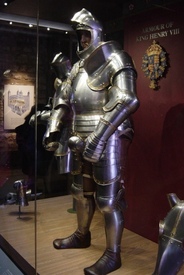 Tower of London - Henry VIII's armour |
| <embed height="282" src="http://wikifoundrytools.com/wiki/thetudorswiki/page/King+Henry+VIII+-+Historical+profile/widget/youtubevideo/-2074881238" type="application/x-shockwave-flash" width="343" wmode="transparent"/> | <embed height="282" src="http://wikifoundrytools.com/wiki/thetudorswiki/page/King+Henry+VIII+-+Historical+profile/widget/youtubevideo/1902651752" type="application/x-shockwave-flash" width="343" wmode="transparent"/> |
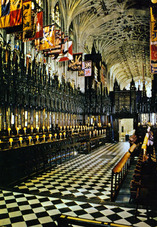 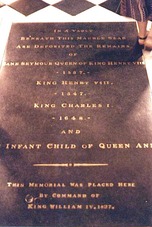 Henry VIII's burial place at St. George Chapel in Windsor Castle. Interred with Jane Seymour. | 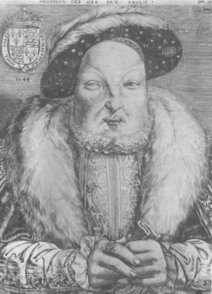 Henry VIII in old age |
Save
